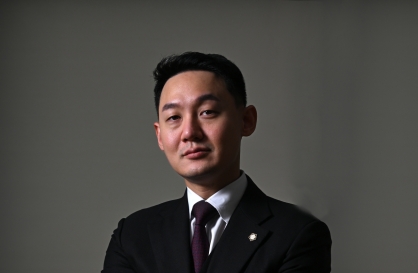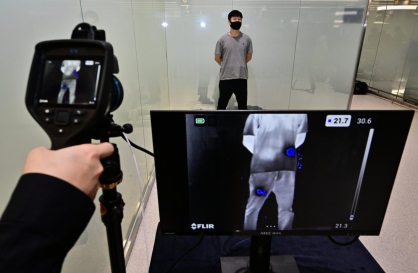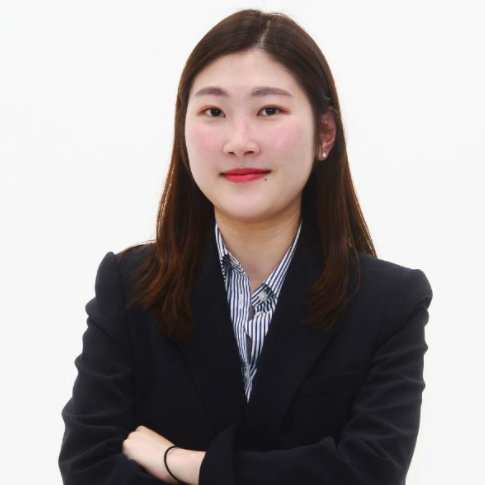Most Popular
Out of the Shadows
[Out of the Shadows] Recovering drug users at rehab call for more help
By Park Jun-heePublished : Dec. 26, 2022 - 16:15

A two-story redbrick house surrounded by trees in Namyangju, Gyeonggi Province, looks like any of the other ordinary suburban homes in the neighborhood. But residents in the house have a special purpose in common -- to put themselves on a path to recovery from drug addiction.
The 165-square-meter house is the Gyeonggi branch of the Drug Addiction Rehabilitation Center, a private halfway house agency for recovery from drug addiction that aims to help drug users kick the habit without medical assistance. It currently serves as a temporary home for 13 residents, all men mostly in their 20s, struggling to avoid relapse with hopes to fully return to society -- and to their real homes.
Guiding the 13 men is Lim Sang-hyeon, a former addict himself. The 72-year-old founded the Gyeonggi DARC in March 2019.
“I struggled to break the addiction because there wasn’t a proper system back then. I made the center to see and help those willing to live a new life. It’s like old caring for the young,” said Lim.
Lim confided he lived a life free of envy when he ran karaoke, disco bar and room salon businesses in red-light districts and lived in a luxury apartment in the posh Gangnam district in the 1980s. But everything changed when he started using drugs.

Lim’s decadeslong struggle was a “slow and painful journey.” At 17, he found himself injecting philopon, or methamphetamine, way before the drug had become common here. He was jailed seven times and served 10 years in prison. By 57, with his life back in order, he had become a nine-time felon.
Drug addiction stunted his family relationships. Seeing his wife and children bearing the brunt of living with an addict, he knew he had to stop. That was also the motivation for Lim to establish the Gyeonggi branch of DARC for a worthy cause: to help people like him.
In a bid to create a facility for drug users, Lim flew to Japan in 2017.
“DARC is a private organization specializing in drug treatment and recovery made by a former Japanese drug addict, Tsuneo Kondo, in 1985. He made the recovery house 37 years ago in Tokyo for the first time to help addicts in poor living conditions and to prevent them from relapsing.” A DARC can only be established by those who have themselves recuperated from drug dependence.
Lim trained himself for two years by following the center’s programs. There, he saw a seismic change -- people recovered and returned to society with jobs. And with the help of officials at the Fujioka and Misawa centers, he brought the system to Korea.
Gyeonggi DARC is the country’s largest DARC center, able to house a maximum 14 people. Korea has four such centers along with just two rehabilitation centers funded by the government -- while Japan has nearly 100 DARC locations.
A DARC location in Incheon can only house four people, while another in Gimhae, South Gyeongsang Province, houses six and a facility in Daegu has a maximum capacity of four. The Seoul center, established seven years prior to the Gyeonggi center, is currently closed.
“Apart from dealing with it as a criminal aspect, it’s crucial to determine what drove them to drug cravings and help them systematically recover with an adequate program. We provide in-house counseling and treatment to ensure long-term recovery, usually for a year.”

In the end, what defines recuperation is whether one’s life has changed, and the last stage of recovery is having a job because they have to return to society. “We make that happen,” Lim said.
“We teach them how to live a typical 20s life, like waking up and going to sleep on time and eating three meals a day. Slowly but surely, we tailor healthy habits to them,” Lim explained.
At DARC, residents start with morning prayers and attend various programs involving mental therapy and exercise to maintain the kind of daily routine that is crucial for them to stay sober and purpose-driven.
In the last four years, the Gyeonggi center has housed 65 recovering drug addicts. Among them, 33 have fully recovered and are employed while around 16 have been incarcerated or relapsed, which Lim counts as success.
At Gyeonggi DARC, Pyun, 25, who only wished to be identified by his surname, said he has found a part of himself he had missed while taking drugs.
Pyun said other centers and hospitals in the country don’t teach users how not to meet the people they did drugs with or to avoid situations where they may encounter drugs. But DARC does.
“The center teaches you what’s wrong and how to muddle through those difficulties. I came here because I wanted to live,” Pyun said. He added that the center had advised him to attend meetings for Narcotics Anonymous, an association of addicts helping each other to recover from drugs.
On Monday, he visits an NA meeting in Sipjeong-dong in Incheon, then goes for another in Apgujeong in Seoul on Tuesday. He goes to Dangsan, western Seoul, every Thursday and Incheon’s Gajeong-dong every Friday to gather with other addicts. The NA meetings have helped him deal with stressful situations healthily, he said. DARC residents have no restrictions on outdoor daytime activities.

At the end of the month, Pyun will be leaving the center after two years of working toward his recovery. Shortly, he hopes to see himself as a social welfare worker helping drug users at Incheon Probation Office, where he served a four-month prison term.
As for Pyun and other addicts, Lim is confident that a better life awaits them. But stigma remains a major obstacle; many people perceive a history of drug use as a “deadly social faux pas.”
People perceive them as those who “regularly commit crimes” and “rotate through prison and street life of drugs,” Lim said, stressing that people tend to judge them based on how long they were in jail, not seeing them as patients who needed treatment.
“Some would say it’s being too soft on crime and view the system as soft, but that’s coming from prejudice. Serious drug offenses require prison terms, but most addiction-related drug use is about relapsing. Addicts will benefit more from rehabilitation than punitive measures that ignore addiction problems.”
Lim pointed out that a lack of financial aid or attention from public institutions and the absence of compensation or a system for recovered people remain major hurdles.
“Half of the addicts at Gyeonggi DARC walked out after recovery, which is something jails and hospitals can’t achieve. Now is the time for the country to take a cue from Japan’s model, where each DARC collaborates with health institutions, but activities remain independent.”
Currently, the center receives 400,000 won ($313) per month from each resident, as well as some funding from private institutions and individuals. Visiting instructors provide lessons free of charge.
“Many DARC centers in Japan are nestled in the capital. Japan wouldn’t have built so many centers if they saw failure. It’s time for the Korean government to invest,” Lim said.

“Past drug dependents are experts, so it would be helpful to use them as staff. They can educate people on drugs and what the rehab center is for. That way, we can raise public awareness about narcotics and their danger.”
He also welcomed the government’s declaration to tackle drugs, but said “how” is the question.
“High-ranked officials should visit here to see how hard these people are trying to recover. In that way, they will know what kind of improvements and solutions are needed,” Lim said.
“Drugs are a lifelong assignment because it will never dissipate. But suppose we have a proper rehabilitation program stopping drug addicts from falling into relapse. The number of drug offenders will fall, and South Korea can return to being a drug-free nation.”
The Korea Herald is running a series of feature stories and interviews on the evolution and rise of drug crimes, insufficient support systems and young users' experiences in South Korea. This is the second installment. -- Ed.







![[Today’s K-pop] Blackpink’s Jennie, Lisa invited to Coachella as solo acts](http://res.heraldm.com/phpwas/restmb_idxmake.php?idx=644&simg=/content/image/2024/11/21/20241121050099_0.jpg&u=20241121172748)















![[Today’s K-pop] Babymonster logs 100m views with ‘Drip’ music video](http://res.heraldm.com/phpwas/restmb_idxmake.php?idx=642&simg=/content/image/2024/11/22/20241122050051_0.jpg&u=20241122172213)